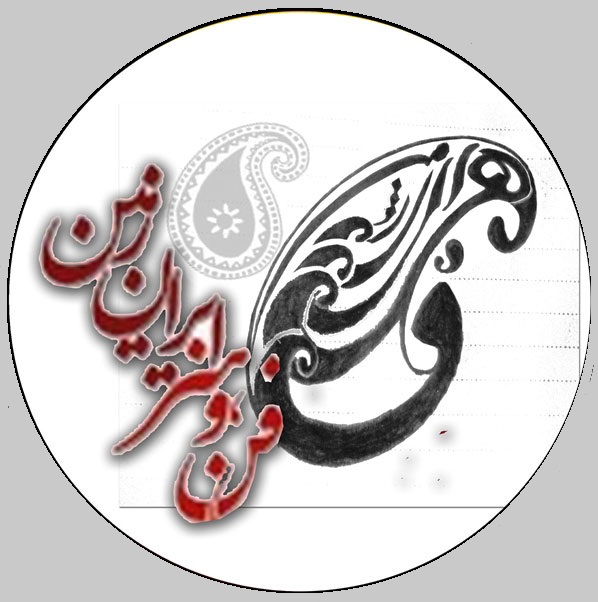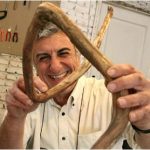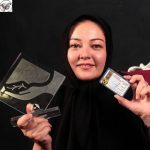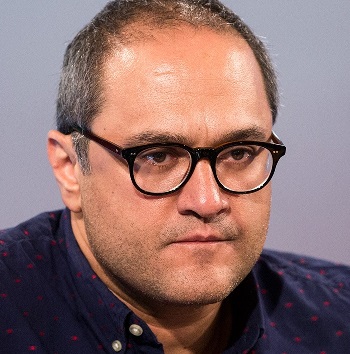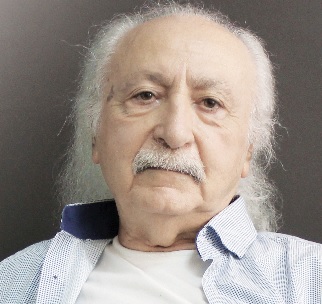Persian art or Iranian art
Islamic geometric design in architecture
Girih Tile ، knot art has a long history in Iran, when Iranian artists and art made with stones in Persepolis and Persepolis implemented and to date the art is taught from master to apprentice.
Persian art or Iranian art has one of the richest art heritages in world history and encompasses many disciplines including architecture, painting, weaving, pottery, calligraphy, metalworking and stonemasonry. There is also a very vibrant Iranian modern and contemporary art scene.
Persian architect?
Ancient or modern?
A scalable solution
Islamic architecture & irani
Moroccan architecture
Geometric Wood Floors Designer Collection
Geometric Wood
persian architects or islamic design
Islamic geometric design in architecture: from ancient to modern times
The artistic wealth of the decorative styles seen in the Maghreb (art irani style), the Middle East and the Muslim world in general, has always captivated western and oriental visitors through the extravagance, complexity and exuberant detail of the two genres that stand out: Islamic geometric design and floral arabesques.
In terms of design, this art form has long virtually ceased to evolve, its development having reached its zenith centuries ago. The designs currently created in the Islamic world for the decoration of roads, palaces and mosques are copies of works created in past ages, which have been replicated again and again based on a limited back-catalogue. Variations on the original works are minimal, even in terms of scale, colors and motif combinations, due to the inherent limitations of the human mind and the technical difficulty of producing new combinations within the geometric genre using traditional methods, particularly in interlaced designs, where each line must travel alternately above and below each line crossed, adding an even greater degree of complexity.
Over the course of history, much research has been carried out into the mathematics behind Islamic geometric patterns, all uniformly affected by a common hindrance: the analysis is partial and incomplete, leaving mysteries unexplained. The mathematical principles governing Islamic mosaics are yet to be unmasked and traditional artisans are the only people to master the art, but only empirically.
This empirical understanding of the complex geometry behind Islamic patterns directly conditions production methods, where for example, far from modern industrial technology, the ceramics used to produce iran ceramic tiles known as zellij is cut using a hammer and chisel and the highly elaborate plasterwork with both geometric designs and floral arabesques is carved by hand directly on the walls of the buildings to be decorated. The same is true of wood, stone and bronze, which are always crafted using artisanal technique .
Iranian art
Persian art or Iranian art has one of the richest art heritages in world history and encompasses many disciplines including architecture, painting, weaving, pottery, calligraphy, metalworking and stonemasonry. There is also a very vibrant Iranian modern and contemporary art scene.
The Persian Fine Arts
The Persian rug
Main article: Persian carpet
From the yarn fiber to the colors, every part of the Persian rug is traditionally handmade from natural ingredients over the course of many months.
The art of rug weaving in has its roots in the culture and customs of its people and their instinctive feelings. Weavers mix elegant patterns with a myriad of colors. The Iranian carpet is similar to the Persian garden: full of florae, birds, and beasts.
The colors are usually made from wild flowers, and are rich in colors such as burgundy, navy blue, and accents of ivory. The proto-fabric is often washed in tea to soften the texture, giving it a unique quality. Depending on where the rug is made, patterns and designs vary. And some rugs, such as Gabbeh, and Gelim have a variations in their textures and number of knots as well. Out of about 2 million Iranians who work in the trade, 1.2 million are weavers producing the largest amount of hand woven aritistic carpets in the world. exported $517 million worth of carpets in 2002.
The exceptional craftsmanship in weaving these carpets and silken textile thus caught the attention of the likes of Xuanzang,Jean-Baptiste Tavernier, and Jean Chardin.

Persian arts
Persian art collage.jpg
Visual arts
Painting Miniature Calligraphy
Decorative arts
Jewelry Metalworks Embroidery Motifs Tileworks Handicrafts Pottery
Literature
Literature Mythology Folklore Philosophy
Performance arts
Dance Music Cinema Theatre
Other
Architecture Cuisine Carpets Gardens
Painting and miniature
Mihr ‘Ali (Iranian, active ca. 1800-1830). Portrait of Fath Ali Shah Qajar, 1815. Brooklyn Museum
Mullahs in the royal presence. The painting style is markedly Qajari.
Main article: Persian painting
Oriental historian Basil Gray believes ” has offered a particularly unique [sic] art to the world which is excellent in its kind”.
Caves in Iran’s Lorestan province exhibit painted imagery of animals and hunting scenes. Some such as those in Fars Province and Sialkare at least 5,000 years old.
Painting in Iran is thought to have reached a climax during the Tamerlane era when outstanding masters such as Kamaleddin Behzadgave birth to a new style of painting.
Paintings of the Qajar period, are a combination of European influences and Safavid miniature schools of painting such as those introduced by Reza Abbasi. Masters such as Kamal-ol-molk, further pushed forward the European influence in Iran. It was during the Qajar era when “Coffee House painting” emerged. Subjects of this style were often religious in nature depicting scenes from Shia epics and the like.
Pottery and ceramics
Main article: Persian pottery
Pottery Vessel, Fourth Millennium BC. The Sialk collection of Tehran’sNational Museum of Iran.
Prominent archeologist Roman Ghirshman believes “the taste and talent of this people [Iranians] can be seen through the designs of their earthen wares”.
Of the thousands of archeological sites and historic ruins of Iran, almost every single one can be found to have been filled, at some point, with earthenware of exceptional quality. Thousands of unique vessels alone were found in Sialk and Jiroft sites.
The occupation of the potter (“kuzeh gar“) has a special place in Persian literature.
Music
Main article: Music of Iran
During the course of Iran’s recorded history, a unique distinctive music developed accompanied by numerous musical instruments, several of which came to be the first prototypes of some modern musical instruments of today.
The earliest references to musicians in Iran are found in Susa and Elam in the 3rd millennium BC. Reliefs, sculptures, and mosaics such as those in Bishapur from periods of antiquity depict a vibrant musical culture.
Persian music in its contemporary form has its inception in the Naseri era, who ordered the opening of a “House of Crafts,” where all master craftsmen would gather for designing instruments and practicing their art.
Literature
Iran is filled with tombs of poets and musicians, such as this one belonging to Rahi Mo’ayeri. An illustration of Iran’s deep artistic heritage.
Main article: Persian literature
Persian literature is by far the most stalwart expression of the Iranian genius. While there are interesting works in prose, it is poetry where the Iranian literature shines at its most. Flourishing over a period of more than a millennium, it was esteemed and imitated well beyond the confines of the Iranian homeland. The literature of Iran’s direct and recently lost territories in the Caucasus (most notably Azerbaijan), as well as Turkey and the Mughal Empire developed under its influence.
Some notable Iranian poets are: Ferdowsi, Khayyam, Hafiz, Attar, Sa’di, Nizami, Sanai, Rudaki, Rumi, Jami, and Shahriar.
Environmental design
See also: Environment of Iran
Architecture
Main article: Iranian architecture
Further information: Achaemenid architecture
The architecture of Iran is one with an exceedingly ancient Persian tradition and heritage. As Arthur Pope put it, “the meaningful Impact of Persian architecture is versatile. Not overwhelming but dignified, magnificent and impressive”.
Persian gardens
Main article: Persian gardens
See also: Bagh (garden), Charbagh and Paradise garden
The tradition and style in the garden design of Persian gardens (Persian باغ ایرانی) has influenced the design of gardens from Andalusia toIndia and beyond. The gardens of the Alhambra show the influence of Persian Paradise garden philosophy and style in a Moorish Palace scale from the era of Al-Andalus in Spain. The Taj Mahal is one of the largest Persian Garden interpretations in the world, from the era of the Mughal Empire in India.
Examples: see Category: Persian Gardens
Calligraphy
Main article: Persian calligraphy
Persian calligraphy has several styles. Seen here is a “shekasteh” manuscript dated 1894, by Seyed Ali Akbar Golestaneh (سید علی اکبر گلستانه). A follower of the style of Darvish, his contemporaries were Mirza Hasan Isfahani (میرزا حسن اصفهانی), Mirza Kuchek Isfahani (میرزا کوچک اصفهانی), and Mohammad Ali Shirazi (محمد علی شیرازی). After his death, the Shekasteh style fell into stagnation until it was revived again later on in the 1970s.
Says writer Will Durant: “Ancient Iranians with an alphabet of 36 letters, used skins and pen to write, Instead of ear-then tablets”. Such was the creativity spent on the art of writing. The significance of the art of calligraphy in works of pottery, metallic vessels, and historic buildings is such that they are deemed lacking without the adorning decorative calligraphy.
Illuminations, and especially the Quran and works such as the Shahnameh, Divan Hafez, Golestan, Bostan et al. are recognized as highly invaluable because of their delicate calligraphy alone. Vast quantities of these are scattered and preserved in museums and private collections worldwide, such as the Hermitage Museum of St. Petersburg and Washington’s Freer Gallery of Art among many others. Styles:
Shekasteh
Nasta’liq
Naskh
Mohaqqaq
Tilework
The tilework is a unique feature of the blue mosques of . In the old days, Kashan (kash + an which literally means “land of tiles”) and Tabrizwere the two famous centers of Iranian mosaic and tile industry.
Persian tilework mismatched
Cinema
Main article: Cinema of Iran
With 300 international awards in the past 25 years, films from Iran continue to be celebrated worldwide. Few of the best known directors are Abbas Kiarostami, Mohsen Makhmalbaf, and Majid Majidi.
Persian Work
A sample of Tabriz rugs
Persian Silk Brocade. Persian Textile (The Golden Yarns of Zari – Brocade). Silk Brocade with Golden Thread (Golabetoon)
Inspired by ancestral nomad tribes (such as geometrical motifs used in kilims or gabbehs).
Islam influenced, with an advanced geometrical research.
Oriental based, also found in India or Pakistan.
Metalwork (Ghalam-zani)
Iranian new Astrolabe
Engraving is a term, relatively rare in English, for artistic metalworking, by hammering gold or silver (or other materials), engraving,Repoussé and chasing to form minute detailed reliefs or small engraved patterns.
Khatam-kari
An example of “khatam-kari“
Delicate and meticulous marquetry, produced since the Safavid period: at this time, khatam was so popular in the court that princes learned this technique at the same level of music or painting. In the 18th and 19th centuries, katahm declined, before being stimulated under the reign of Reza Shah, with the creation of craft schools in Tehran, Isfahan, and Shiraz. “Khatam” means “incrustation”, and “Khatam-kari” (Persian: خاتمکاری), “incrustation work”. This craft consists in the production of incrustation patterns (generally star shaped), with thin sticks of wood (ebony, teak, ziziphus, orange, rose), brass (for golden parts), camel bones (white parts). Ivory, gold or silver can also be used for collection objects. Sticks are assembled in triangular beams, themselves assembled and glued in a strict order to create a cylinder, 70 cm in diameter, whose cross-section is the main motif: a six-branch star included in a hexagon. These cylinders are cut into shorter cylinders, and then compressed and dried between two wooden plates, before being sliced for the last time, in 1 mm wide tranches. These sections are ready to be plated and glued on the object to be decorated, before lacquer finishing. The tranche can also be softened through heating in order to wrap around objects. Many objects can be decorated in this fashion, such as: jewellery/decorative boxes, chessboards, cadres,pipes, desks, frames or some musical instruments. Khatam can be used on Persian miniature, realizing true work of art.
Coming from techniques imported from China and improved by Persian know-how, this craft existed for more than 700 years and is still perennial in Shiraz and Isfahan.
Mina-kari
Enamel working and decorating metals with colorful and baked coats is one of the distinguished courses of art in Isfahan . Mina, is defined as some sort of glasslike colored coat which can be stabilized by heat on different metals particularly copper. Although this course is of abundant use industrially for producing metal and hygienic dishes, it has been paid high attention by painters, goldsmiths and metal engravers since long times ago. In the world, it is categorized into three kinds as below:
painting enamel
Charkhaneh or chess like enamel
Cavity enamel.
What of more availability in Isfahan is the painting enamel of which a few have remained in the museums of Iran and abroad indicting that Iranian artists have been interested in this art and used it in their metal works since the Achaemenian and the Sassanid dynasties. The enamels being so delicate, we do not have many of them left from the ancient times. Some documents indicate that throughout the Islamic civilization of and during the Seljuk, Safavid and Zand dynasties there have been outstanding enameled dishes and materials. Most of the enameled dishes related to the past belong to the Qajar dynasty between the years 1810–1890 AD. There have also remained some earrings. Bangles, boxes, water pipe heads, vases, and golden dishes with beautiful paintings in blue and green colors from that time, Afterwards, fifty years of stagnation caused by the World War I and the social revolution followed. However, again the enamel red color, having been prepared, this art was fostered from the quantity and quality points of view through the attempts bestowed by Ostad Shokrollah Sani’e zadeh, the outstanding painter of Isfahan in 1935 and up to then for forty years.
Now after a few years of stagnation since 1992, this art has started to continue its briskness having a lot of distinguished artists working in this field. To prepare an enameled dish, the following steps are used. First, choose the suitable dish by the needed size and shape which is usually made by a coppersmith. Then, it is bleached through enameled working which is known as the first coat. It is then put into a seven hundred and fifty degree furnace. At this stage, the enameled metal will be coated with better enamels a few more times and again reheated. The dish is then ready to be painted. The Isfahanian artists, having been inspired by their traditional plans as arabesque, khataii (flowers and birds) and using fireproof paints and special brushes, have made painting of Isfahan monuments such as step, the enameled material is put into the furnace again and heated at five hundred degrees. This causes the enameled painting to be stabilized on the undercoat, creating a special “shining” effect. Most of today’s enamel workings are performed on dishes, vases, boxes and frames in various size.
Relief and sculpture
Persian statue of a woman, found in theancient Persian royal palace of Persepolis
Median man in Persepolis relief
The Qajarid reliefs of Tangeh Savashi were made by order of Fath Ali Shah.
Relief carving has a history dating back thousands of years. Elamite reliefs are still to be found in Iran with Persepolis being a mecca of relief creations of antiquity.
Other handicrafts
Galesh
Ghalamkar
Giveh
Iranian Termeh
Persian Jewels
Qalamkari
See also
Cultural Heritage, Handcrafts and Tourism Organization
Safavid art
Qajar art
Culture of Iran
List of Persian painters
Iranian modern and contemporary art
Iran’s House of Art
International rankings of Iran
Graffiti in Tehran
Persian theatre
Azerbaijani art
مطالب مرتبط :
- کابینت هوشمند با اسپیکر، دستیار صوتی، رادیو و نورپردازی | تجربهای متفاوت در آشپزخانه
 کابینت هوشمند با اسپیکر بلوتوثی، نورپردازی، دستیار صوتی، رادیو و ساعت دیجیتال؛ آشپزخانهای با تکنولوژی بالا برای خانههای مدرن. طراحی و اجرا توسط گروه مهندسی فن و هنر.
کابینت هوشمند با اسپیکر بلوتوثی، نورپردازی، دستیار صوتی، رادیو و ساعت دیجیتال؛ آشپزخانهای با تکنولوژی بالا برای خانههای مدرن. طراحی و اجرا توسط گروه مهندسی فن و هنر. - طراحی و ساخت المانهای دیزاین مهد کودک و فضای کودکانه در تهران و سراسر ایران
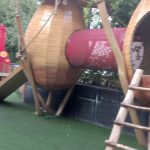 چرا باید به طراحی مهدکودک اهمیت داد؟افزایش تمرکز و خلاقیت کودک در محیط زیبا و استانداردکاهش استرس و افزایش احساس امنیت
چرا باید به طراحی مهدکودک اهمیت داد؟افزایش تمرکز و خلاقیت کودک در محیط زیبا و استانداردکاهش استرس و افزایش احساس امنیت - تولید کننده انواع ظروف چوبی آشپزخانه و ماگ ، مصنع أواني خشبية للمطبخ وأكواب خشبية
 مصنع أواني خشبية للمطبخ وأكواب خشبية ،
مصنع أواني خشبية للمطبخ وأكواب خشبية ، - ساخت ماکتهای هنرمندانه کلبههای چوبی توسط استاد نجاری، آقای سیمیاریان | هنر دست در مقیاس کوچک
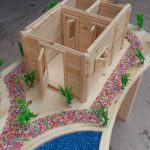 ساخت کلبه چوبی هنرمندانه استاد سیمیاریان با بهرهگیری از مهارتهای سنتی نجاری و نگاهی هنری، انواع ماکتهای کلبه چوبی را با دقت و ظرافت فوقالعاده میسازد. این آثار میتوانند الهامبخش پروژههای واقعی ویلاسازی یا دکوراسیون داخلی باشند. — نسخه توصیفی برای معرفی پروژه ماکتسازی هنری کلبههای چوبی با جزئیات شگفتانگیز توسط استاد سیمیاریان … خواندن بیشتر: ساخت ماکتهای هنرمندانه کلبههای چوبی توسط استاد نجاری، آقای سیمیاریان | هنر دست در مقیاس کوچک
ساخت کلبه چوبی هنرمندانه استاد سیمیاریان با بهرهگیری از مهارتهای سنتی نجاری و نگاهی هنری، انواع ماکتهای کلبه چوبی را با دقت و ظرافت فوقالعاده میسازد. این آثار میتوانند الهامبخش پروژههای واقعی ویلاسازی یا دکوراسیون داخلی باشند. — نسخه توصیفی برای معرفی پروژه ماکتسازی هنری کلبههای چوبی با جزئیات شگفتانگیز توسط استاد سیمیاریان … خواندن بیشتر: ساخت ماکتهای هنرمندانه کلبههای چوبی توسط استاد نجاری، آقای سیمیاریان | هنر دست در مقیاس کوچک - سازنده انواع درب سنتی و مبلمان گرهچینی با ساخت سفارشی
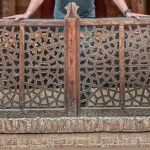 در این مقاله درباره طراحی و ساخت دربهای سنتی و مبلمان چوبی گرهچینی صحبت میکنیم. ابتدا توضیح میدهیم که گرهچینی چیست و چه ویژگیهایی دارد
در این مقاله درباره طراحی و ساخت دربهای سنتی و مبلمان چوبی گرهچینی صحبت میکنیم. ابتدا توضیح میدهیم که گرهچینی چیست و چه ویژگیهایی دارد - مقایسه سرکه سیب و دیسپ , فروش سرکه و دیسپ +قیمت
 فروش دیسپ کنگره ، حتماً! در ادامه مقالهای جامع و بهروز درباره تفاوت دیسپ و سرکه، همراه با معرفی دیسپ انگور و دیسپ سیب، روشهای تهیه، خواص و نحوه صحیح مصرف دیسپ ارائه میدهم. این
فروش دیسپ کنگره ، حتماً! در ادامه مقالهای جامع و بهروز درباره تفاوت دیسپ و سرکه، همراه با معرفی دیسپ انگور و دیسپ سیب، روشهای تهیه، خواص و نحوه صحیح مصرف دیسپ ارائه میدهم. این
